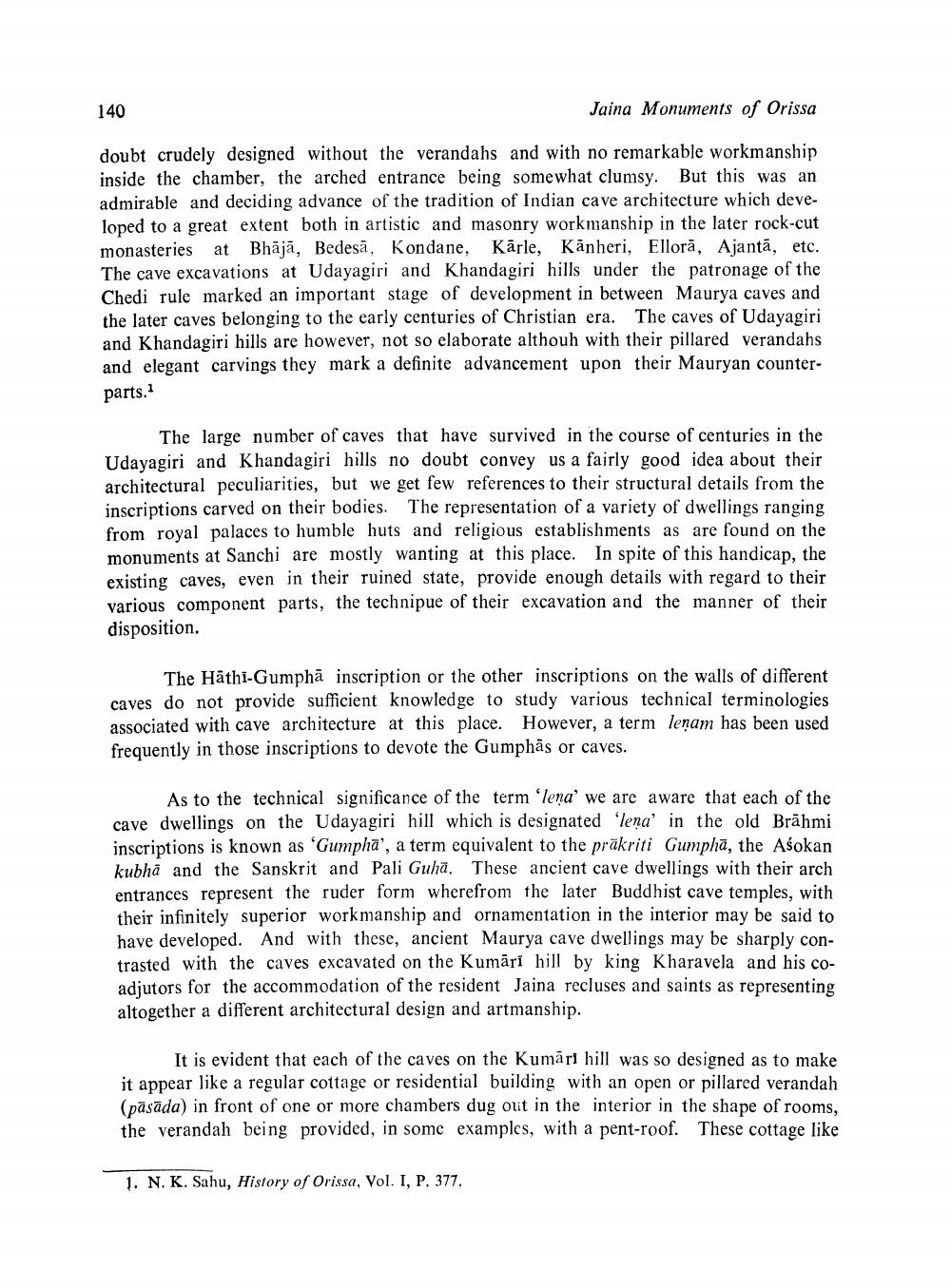________________
140
Jaina Monuments of Orissa
doubt crudely designed without the verandahs and with no remarkable workmanship inside the chamber, the arched entrance being somewhat clumsy. But this was an admirable and deciding advance of the tradition of Indian cave architecture which developed to a great extent both in artistic and masonry workmanship in the later rock-cut monasteries at Bhājā, Bedesä, Kondane, Kārle, Kānheri, Ellorā, Ajantā, etc. The cave excavations at Udayagiri and Khandagiri hills under the patronage of the Chedi rule marked an important stage of development in between Maurya caves and the later caves belonging to the early centuries of Christian era. The caves of Udayagiri and Khandagiri hills are however, not so elaborate althouh with their pillared verandahs and elegant carvings they mark a definite advancement upon their Mauryan counter
parts.
The large number of caves that have survived in the course of centuries in the Udayagiri and Khandagiri hills no doubt convey us a fairly good idea about their architectural peculiarities, but we get few references to their structural details from the inscriptions carved on their bodies. The representation of a variety of dwellings ranging from royal palaces to humble huts and religious establishments as are found on the monuments at Sanchi are mostly wanting at this place. In spite of this handicap, the existing caves, even in their ruined state, provide enough details with regard to their various component parts, the technipue of their excavation and the manner of their disposition.
The Hathi-Gumphā inscription or the other inscriptions on the walls of different caves do not provide sufficient knowledge to study various technical terminologies associated with cave architecture at this place. However, a term lenam has been used frequently in those inscriptions to devote the Gumphās or caves.
As to the technical significance of the term 'lena' we are aware that each of the cave dwellings on the Udayagiri hill which is designated 'lena' in the old Brāhmi inscriptions is known as 'Gumpha', a term equivalent to the präkriti Gumphā, the Asokan kubhā and the Sanskrit and Pali Guha. These ancient cave dwellings with their arch entrances represent the ruder form wherefrom the later Buddhist cave temples, with their infinitely superior workmanship and ornamentation in the interior may be said to have developed. And with these, ancient Maurya cave dwellings may be sharply contrasted with the caves excavated on the Kumāri hill by king Kharavela and his coadjutors for the accommodation of the resident Jaina recluses and saints as representing altogether a different architectural design and artmanship.
It is evident that each of the caves on the Kumāri hill was so designed as to make it appear like a regular cottage or residential building with an open or pillared verandah (pāsāda) in front of one or more chambers dug out in the interior in the shape of rooms, the verandah being provided, in some examples, with a pent-roof. These cottage like
1. N. K. Sahu, History of Orissa, Vol. I, P. 377.




